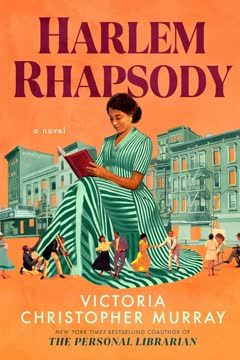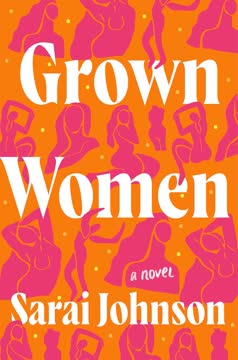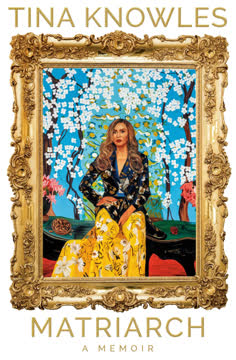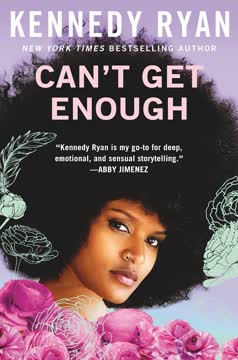Plot Summary
Arrival in Harlem's Rhapsody
Jessie Redmon Fauset, a highly educated Black woman, arrives in Harlem in 1919, accompanied by her stepmother, Bella. The city's energy and music immediately captivate her, symbolizing the promise of a new life. Jessie is welcomed by W. E. B. Du Bois, the magnetic leader of the NAACP and editor of The Crisis magazine, who has secured her a position as literary editor. The apartment, the city, and the opportunity all represent a fresh start, but also the beginning of complex personal and professional entanglements. Jessie's relationship with her stepmother is loving but fraught with generational and cultural tensions, especially as Bella senses the undercurrents between Jessie and Du Bois. Harlem, with its vibrant streets and swelling Black population, becomes both a stage and a character in Jessie's unfolding story.
The Crisis: A New Beginning
On her first day at The Crisis, Jessie is introduced to the bustling, under-resourced world of Black publishing. The magazine, the official organ of the NAACP, is run by a skeleton crew, with Du Bois and Augustus Dill as her main colleagues. Jessie is immediately tasked with organizing the chaotic submissions and correspondence, a metaphor for the larger work of bringing order and vision to Black literary life. She meets key figures of the NAACP, including Mary White Ovington, who is skeptical of Jessie's appointment. Jessie's competence and ambition are clear, but so are the challenges: she must navigate office politics, racial and gender expectations, and the looming presence of Du Bois, whose charisma and intellect both inspire and complicate her new role.
Literary Ambitions and Entanglements
Jessie's professional ambitions are quickly entangled with her personal life. Du Bois, married and much older, is both her mentor and her lover—a relationship fraught with secrecy, longing, and the ever-present threat of scandal. Their intellectual partnership is electric: together, they envision new projects, including The Brownies' Book, a magazine for Black children. Jessie's family, especially her stepmother and sister, worry about the risks of her affair with Du Bois, warning her of the dangers to her reputation and future. Jessie, however, is drawn to Du Bois's power, vision, and the way he believes in her talent. The tension between love, ambition, and respectability becomes a central conflict, shaping Jessie's choices and the trajectory of her career.
Harlem's Pulse and Private Longings
As Jessie settles into Harlem, she is swept up in the city's cultural renaissance. She attends church, meets rising stars like Countee Cullen and Nella Larsen, and forms friendships with other ambitious women. Yet, beneath the surface, her private life is turbulent. The affair with Du Bois is both intoxicating and isolating, as she must hide her feelings and navigate the disapproval of her family and colleagues. The city's music, art, and intellectual ferment provide both inspiration and a backdrop for Jessie's internal struggles. Harlem is a place of possibility, but also of constant negotiation—between public achievement and private desire, between community expectations and personal fulfillment.
The Burden of Double Consciousness
Jessie's journey is deeply marked by the concept of "double consciousness," articulated by Du Bois himself: the sense of always looking at oneself through the eyes of others. As a Black woman, Jessie faces compounded barriers—racism, sexism, and colorism—both within and outside the Black community. Her stepmother, Bella, a white Jewish woman who converted to Christianity and married a Black man, embodies the complexities of integration and rebellion. Jessie's own experiences of exclusion, from being denied admission to Bryn Mawr to facing skepticism at The Crisis, fuel her determination to succeed. Yet, the constant need to prove herself, to be "twice as good," takes a psychological toll, shaping her relationships and her sense of self.
Building a Literary Home
As literary editor, Jessie becomes the "midwife" of the Harlem Renaissance, discovering and nurturing talents like Langston Hughes, Countee Cullen, Jean Toomer, and Gwendolyn Bennett. She creates space for Black writers—especially women—whose voices had been marginalized. Through salons, mentorship, and editorial guidance, Jessie helps shape a new Black literary canon. Her work is both creative and political: she insists on the importance of Black-authored stories, challenges white-authored representations, and fights for the dignity and complexity of Black characters. The Crisis becomes a beacon for aspiring writers, and Jessie's influence ripples through the community, even as she struggles for recognition and authority within the magazine itself.
The Brownies' Book Dream
Jessie and Du Bois launch The Brownies' Book, a groundbreaking magazine for Black children, aiming to counteract racist stereotypes and instill pride. The project is a labor of love, but also a source of stress and disappointment. Despite critical acclaim and Jessie's tireless work, the magazine struggles financially and is eventually shuttered due to lack of support from the Black community. The experience is bittersweet: it highlights both the possibilities and the limitations of Black cultural production in a segregated, unequal society. The end of The Brownies' Book marks a turning point for Jessie, deepening her resolve to fight for Black representation and to claim her own authority as an editor and writer.
Women, Respectability, and Rebellion
Throughout her journey, Jessie is surrounded by women who defy convention: her stepmother Bella, her friend Nella Larsen, and the white patron Charlotte Osgood Mason. The novel explores the tensions between respectability and rebellion, between the desire for social acceptance and the need for self-actualization. Jessie's own choices—her affair, her career ambitions, her refusal to marry—put her at odds with traditional expectations. The suffrage movement, the rise of women's clubs, and the debates over Black women's roles all play out in Jessie's life and work. The struggle for equality is not just racial, but also gendered, and Jessie's story is one of forging new paths for herself and for the women who follow.
Harlem's Sunday and New Voices
Harlem's churches, libraries, and salons become crucibles for new talent. Jessie mentors young writers like Langston Hughes and Countee Cullen, encouraging them to find their own voices and to write honestly about Black life. She navigates the complexities of patronage, especially with white benefactors like Charlotte Mason, who both enable and constrain Black creativity. The emergence of new voices is both exhilarating and challenging, as Jessie must balance her own ambitions with her commitment to the community. The literary renaissance is a collective achievement, but also a site of competition, rivalry, and negotiation over who gets to tell the story of Black America.
Love, Power, and Betrayal
The affair between Jessie and Du Bois, once a source of inspiration and support, becomes increasingly fraught. Du Bois's infidelities, his refusal to relinquish control of The Crisis, and his patriarchal attitudes strain their partnership. Jessie is forced to confront the limits of her influence and the costs of loving a powerful, flawed man. The arrival of other women—most notably Georgia Douglas Johnson—complicates matters further, as Jessie realizes she is not the only one. The personal and professional betrayals are intertwined, leading Jessie to question her place at The Crisis and her future in Harlem. The end of the affair is both painful and liberating, marking the beginning of a new chapter in Jessie's life.
The Price of Ambition
Jessie's ambition to become editor of The Crisis is repeatedly thwarted by Du Bois's unwillingness to step aside and by the entrenched sexism and racism of the publishing world. Even as she is celebrated as the "midwife" of the Harlem Renaissance, her own work is often overshadowed or appropriated by others. The launch of literary contests, the competition with Opportunity magazine, and the constant need to adapt and innovate test Jessie's resilience. Her eventual decision to leave The Crisis is both a recognition of her achievements and an acknowledgment of the barriers she cannot overcome. The price of ambition is high, but Jessie refuses to settle for less than she deserves.
The Midwife of a Movement
At the height of the Harlem Renaissance, Jessie is recognized as the central figure who "birthed" a generation of Black writers. The famous photograph taken at the Opportunity awards dinner, with Jessie at the center, symbolizes her role as the movement's midwife. Her influence extends beyond her own writing to the careers of Langston Hughes, Countee Cullen, Jean Toomer, Nella Larsen, and many others. Jessie's legacy is not just in the pages of The Crisis, but in the flourishing of Black literature and culture. Yet, even as she is celebrated, she is also aware of the limitations of her position and the need to move on to new dreams.
The Contest and the Competition
The literary contest, initially conceived by Jessie and Du Bois, becomes a site of rivalry when Opportunity magazine launches its own competition with greater fanfare and prize money. Jessie is caught between loyalty to The Crisis and her commitment to the writers she has nurtured. The contest exposes the fractures within the Black literary community, as well as the challenges of sustaining Black institutions in the face of competition and appropriation. Jessie's handling of the crisis demonstrates her professionalism and her ability to adapt, but also her growing frustration with the limitations of her role. The episode is a microcosm of the larger struggles for recognition, authority, and ownership in Black cultural life.
Parisian Freedom, Harlem's Return
A six-month sojourn in Paris offers Jessie a taste of freedom and a new perspective on her life and work. The distance from Harlem, The Crisis, and Du Bois allows her to reflect on her ambitions and desires. Paris is a place of artistic ferment and relative racial freedom, but also of longing for home. Jessie's return to Harlem is marked by renewed determination to claim her place as a writer and editor. The experience abroad clarifies what she wants—and what she must leave behind. The tension between escape and return, between individual fulfillment and communal responsibility, is a recurring theme in Jessie's journey.
The New Negro Awakening
The publication of Jessie's novel, There Is Confusion, and the Opportunity awards dinner mark the arrival of the "New Negro" movement. Jessie is at the center of this awakening, both as a writer and as a mentor. The movement is characterized by a flowering of Black creativity, a rejection of old stereotypes, and a demand for recognition and respect. Yet, the celebration is also marked by tensions—between old and new, between men and women, between Black and white patrons, between individual achievement and collective progress. Jessie's role is both celebrated and contested, as she navigates the shifting landscape of Black cultural politics.
The Crisis of Recognition
Despite her achievements, Jessie is repeatedly reminded of the limits of her authority and recognition. The Civic Club dinner, intended to honor her, becomes a stage for others to claim the spotlight. The struggle for editorial control at The Crisis, the rivalry with Opportunity, and the challenges of working with Du Bois all underscore the difficulties faced by Black women in positions of leadership. Jessie's decision to resign from The Crisis is both an act of self-assertion and a recognition of the barriers she cannot overcome. Her legacy is secure, but her journey is marked by both triumph and disappointment.
The Endings We Choose
In the final chapters, Jessie leaves The Crisis, ends her affair with Du Bois, and prepares to embark on a new chapter as a writer and, she hopes, as an editor in mainstream publishing. Her departure is marked by both sorrow and hope, as she reflects on the legacy she leaves behind and the dreams she still pursues. The visit from Nina Du Bois, who acknowledges Jessie's importance in her husband's life, provides a moment of closure and grace. Jessie's story ends not with defeat, but with the determination to continue changing the world with her words. Harlem's rhapsody continues, and Jessie's voice remains at its heart.
Characters
Jessie Redmon Fauset
Jessie is the heart of the novel—a brilliant, educated Black woman determined to make her mark as a writer and editor. Raised in Philadelphia by a loving but demanding family, she is shaped by both privilege and exclusion. Her relationship with her stepmother, Bella, is a source of strength and tension, reflecting the complexities of race, religion, and gender. Jessie's affair with Du Bois is both empowering and destructive, fueling her ambition but also exposing her vulnerabilities. As literary editor of The Crisis, she becomes the "midwife" of the Harlem Renaissance, discovering and nurturing a generation of Black writers. Jessie's journey is marked by resilience, sacrifice, and a relentless pursuit of recognition and self-actualization. Her greatest legacy is the community she builds and the writers she launches, even as she struggles for her own place in history.
W. E. B. Du Bois
Du Bois is a towering figure—intellectually brilliant, politically astute, and personally magnetic. As editor of The Crisis and leader of the NAACP, he is both a gatekeeper and a champion for Black advancement. His relationship with Jessie is complex: he is her mentor, lover, and sometimes adversary. Du Bois's commitment to "art as propaganda" shapes the magazine's mission, but also limits the creative freedom of the writers he supports. His patriarchal attitudes, infidelities, and reluctance to relinquish control create conflict and ultimately drive Jessie away. Du Bois is both a product of his time and a shaper of history, embodying the contradictions of leadership, love, and legacy.
Bella Huff Fauset
Bella, Jessie's white Jewish stepmother, is a model of both rebellion and respectability. Her marriage to a Black man and her advocacy for integration challenge the norms of her time. Bella's relationship with Jessie is loving but fraught, as she both supports and questions Jessie's choices—especially her affair with Du Bois. Bella's own sacrifices and convictions shape Jessie's understanding of womanhood, race, and ambition. She is a source of wisdom, comfort, and, at times, painful honesty, reminding Jessie of the costs and responsibilities of her path.
Langston Hughes
Langston is introduced as a young, uncertain writer whose talent is recognized and nurtured by Jessie. His journey from high school graduate to celebrated poet mirrors the rise of the Harlem Renaissance. Langston's struggles with family, identity, and patronage (especially with Charlotte Mason) reflect the broader challenges faced by Black artists. His relationship with Jessie is one of mutual respect, affection, and creative collaboration. Langston's poetry, especially "The Negro Speaks of Rivers," becomes emblematic of the new Black voice that Jessie helps to midwife.
Countee Cullen
Countee is another of Jessie's literary "children," a shy and gifted young man whose poetry is shaped by her mentorship. His journey from high school to national recognition is marked by both triumph and insecurity. Countee's relationship with Jessie is one of deep gratitude and admiration, as she helps him find his voice and claim his place in the literary world. His success in the Opportunity contest and his later achievements are testaments to Jessie's influence and the possibilities of Black creativity.
Jean Toomer
Jean is a writer caught between identities, refusing to be defined solely as a "Negro writer." His struggles with race, belonging, and recognition reflect the complexities of the Harlem Renaissance. Jessie's editorial guidance helps shape his work, especially the acclaimed novel Cane, but their relationship is also marked by tension over questions of identity and authenticity. Jean's journey highlights the challenges of claiming and transcending racial categories in a segregated society.
Nella Larsen
Nella is both a confidante and a mirror for Jessie, sharing her struggles as a biracial woman and aspiring writer. Their friendship is marked by mutual support, competition, and the challenges of balancing ambition with personal fulfillment. Nella's work at the library, her marriage, and her eventual literary success (with Quicksand and Passing) parallel Jessie's own journey. Nella's perspective on passing, identity, and the role of women in the movement adds depth and complexity to the novel's exploration of race and gender.
Georgia Douglas Johnson
Georgia is both a colleague and a potential rival, especially as rumors swirl about her relationship with Du Bois. Her poetry is celebrated, and her presence in Harlem's literary circles is significant. Georgia's interactions with Jessie are marked by both camaraderie and competition, reflecting the complexities of female friendship and professional rivalry in a male-dominated world. Her ambiguous relationship with Du Bois forces [Jess
Last updated:
FAQ
Synopsis & Basic Details
What is Harlem Rhapsody about?
- A Literary Midwife's Journey: Harlem Rhapsody chronicles the life of Jessie Redmon Fauset, a brilliant and ambitious Black woman who moves to Harlem in 1919 to become the literary editor of W. E. B. Du Bois's The Crisis magazine. The novel follows her professional ascent as she discovers and nurtures a generation of iconic Harlem Renaissance writers.
- Forbidden Love and Ambition: At its heart, the story explores Jessie's passionate and tumultuous secret affair with the married W. E. B. Du Bois, navigating the complex interplay between personal desires, societal expectations, and her relentless professional ambition. This relationship is both a source of inspiration and profound conflict.
- Shaping a Cultural Movement: The narrative immerses readers in the vibrant cultural explosion of 1920s Harlem, showcasing Jessie's pivotal, often unsung, role in shaping the "New Negro Movement" through her editorial work, mentorship, and her own groundbreaking novel, There Is Confusion.
Why should I read Harlem Rhapsody?
- Unearthing a Forgotten Icon: Discover the compelling story of Jessie Redmon Fauset, often called the "midwife" of the Harlem Renaissance, whose immense contributions to Black literature and the careers of legendary authors have been historically overlooked. This novel finally gives her the spotlight she deserves.
- Immersive Historical Experience: Dive into the rich, dynamic world of 1920s Harlem, brought to life through vivid descriptions of its music, fashion, intellectual salons, and the profound social and political struggles of the era. It's a journey into a pivotal moment in American history.
- Profound Emotional Depth: Engage with a powerful narrative that explores universal themes of ambition, forbidden love, racial and gender discrimination, and the enduring quest for self-definition, legacy, and personal freedom against formidable odds.
What is the background of Harlem Rhapsody?
- Anchored in Historical Fact: Victoria Christopher Murray meticulously grounds this historical fiction novel in extensive research, drawing from biographies, census records, and every issue of The Crisis magazine from 1919 to 1925 to accurately portray Jessie Redmon Fauset's life and the Harlem Renaissance.
- The "New Negro Movement" Context: The story is set during a transformative period of Black cultural awakening, capturing the explosion of Black art, literature, and intellectual thought in Harlem, a movement that challenged racial stereotypes and demanded recognition and respect.
- Author's Personal Connection: Murray was inspired by Fauset's overlooked legacy as a Black female writer, aiming to portray her as a brilliant yet vulnerable woman at the epicenter of this pivotal era, and to highlight the complex, often contradictory, lives of historical figures.
What are the most memorable quotes in Harlem Rhapsody?
- "It isn't a cacophony, it's a rhapsody, and my heart races to match its beat." (Jessie, Chapter 1): This iconic quote encapsulates Jessie's immediate and profound enchantment with Harlem, symbolizing her deep emotional connection to the city's vibrant cultural pulse and foreshadowing her integral role in its unfolding "rhapsody."
- "My soul has grown deep like the rivers." (Langston Hughes, "The Negro Speaks of Rivers," Chapter 24): This powerful line, discovered and championed by Jessie, becomes a thematic anchor, symbolizing the profound depth, resilience, and enduring legacy of the Black experience, echoing Du Bois's concept of "double consciousness" and the collective strength of the race.
- "The Crisis is my dream that I birthed alone." (W. E. B. Du Bois, Chapter 56): This poignant statement from Du Bois, made during Jessie's resignation, reveals his ultimate possessiveness over his creation, highlighting the patriarchal power dynamics and his inability to fully share leadership, which ultimately solidifies Jessie's decision to seek her own independent path.
What writing style, narrative choices, and literary techniques does Victoria Christopher Murray use?
- Intimate First-Person Perspective: The novel is primarily narrated from Jessie's point of view, offering readers deep access to her internal thoughts, emotional conflicts, and personal growth, allowing for an immersive experience of the Harlem Renaissance through her eyes. This choice emphasizes her subjective journey and hidden struggles.
- Seamless Integration of Historical Detail: Murray masterfully weaves historical figures, events, and cultural nuances into the fictionalized narrative, grounding the story in authentic period details, from the specific songs and fashion trends to the political debates and social dynamics of 1920s Harlem.
- Symbolism and Recurring Motifs: The author frequently employs rich symbolism, such as Harlem as a "rhapsody," Jessie as a "midwife," and recurring imagery of light, darkness, and water (rivers), which reflect the characters' inner states, the complexities of racial identity, and the broader themes of the era.
Hidden Details & Subtle Connections
What are some minor details that add significant meaning?
- Bella's Hidden Rebellion (Chapter 9): Bella's casual knowledge of Irving Berlin's "You Cannot Make Your Shimmy Shake on Tea" and her subtle "jig" to the blues, despite her "reverend's widow" persona, subtly reveals her own adaptable spirit and quiet rebellion against rigid societal norms, foreshadowing her eventual, albeit reluctant, acceptance of
Review Summary
Harlem Rhapsody receives mostly positive reviews, with readers praising its portrayal of Jessie Redmon Fauset and the Harlem Renaissance. Many appreciate the historical accuracy and character development, though some feel the focus on Fauset's relationship with W.E.B. Du Bois overshadows her literary accomplishments. Readers enjoy learning about lesser-known historical figures and the book's blend of fact and fiction. The audio version narrated by Robin Miles is highly recommended. Overall, the novel is commended for its rich historical detail and compelling storytelling.
Similar Books
Download PDF
Download EPUB
.epub digital book format is ideal for reading ebooks on phones, tablets, and e-readers.












